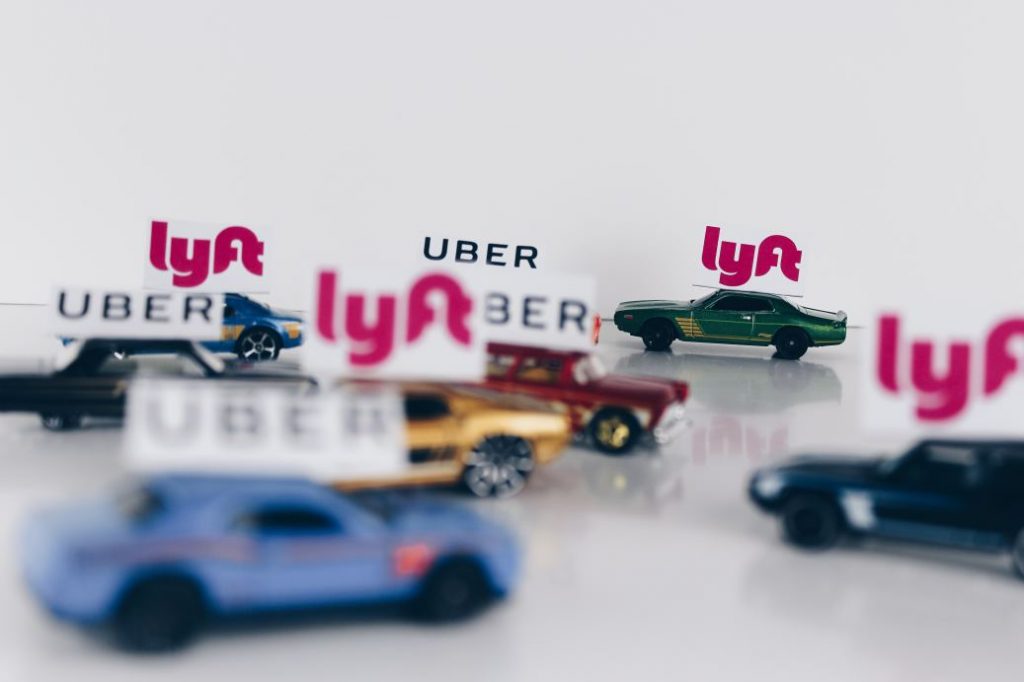First version: Dec 2016, updated Feb 2018. This blog is a summary of the full article at http://rufuspollock.com/ubernomics

Around the world countries have struggled to work out how to deal with Uber, AirBnB and their like. Are these new apps something to be welcomed or something to be stopped? But how we treat Uber-like companies is largely dependent on how we see and understand them.
There is, in fact, nothing especially digital about the underlying economics of Uber’s business model. In fact, Uber’s economics are very similar to businesses that have been with us for hundreds or even thousands of years: marketplaces / platforms.
Because of the positive feedback between buyers and sellers, the initial free competition between marketplaces tends towards “one” – one dominant marketplace. And, hence, to monopoly if that one marketplace is exclusively owned and controlled.
Monopoly is not inevitable though: we can have open platforms/marketplaces – just as we have free and open markets. To do this requires us to open the digital infrastructure and, where appropriate, to open the order book too.
Note: we’ll use the term platform and marketplace interchangeably. Today, “platform” is the more common term in the digital world and in economics (“two-sided platforms” etc). However, here we often prefer “marketplace” because it connects this with something both familiar and ancient.

1. Uber-like companies are marketplace or platform companies
Stripped to their essence Uber, AirBnB and the like resemble a very old economic structure: the marketplace. Marketplaces are where buyers and sellers come together to exchange. On Uber this is riders and drivers. On AirBnB owners and renters etc. Marketplaces have existed for thousands of years, practically since civilization first began.
More broadly, we have platforms. This includes companies like Facebook, Google, Microsoft and eBay. Facebook is a platform mediating between users – and advertisers. Google is a platform mediating between users and content – and advertisers. Microsoft’s Windows is an operating system platform mediating between apps and users.
Strictly platforms as broader than marketplaces. For example, an operating system or social network is a platform but not, strictly, a marketplace. However, many of the same ideas apply and so the distinction does not matter much here.
2. Platforms tend to one because of positive feedback between buyers and sellers
Like a snowball down a mountain, marketplaces, once past a critical size, have the potential to grow rapidly thanks to positive feedback where buyers and sellers both value size because it offers:
- liquidity: you will be able to trade e.g. book a taxi, rent an apartment etc
- diversity: they have the product you want e.g. this particular fish is available, that stock has a market maker, there is a taxi in your area (not just central London)
Furthermore, buyers and sellers usually don’t want to have to participate in lots of different marketplaces (“multi-homing” is a pain). Combined with the positive feedback effects this creates a strong pressure for there to be just one marketplaces.
3. Marketplaces tend to monopoly (unless made open)
Because of snowball economics over time you converge on just one marketplaces – “marketplaces tend to one”. You don’t have ten fish markets in a town, you have one. You don’t have fifty stock exchanges, you have one.
The question then is: is that marketplace “closed”: exclusively owned and controlled by one entity. If so it becomes a monopoly. Or is an “open” marketplace where anyone can participate on fair and equitable terms?
Note: there can be substantial competition to become the monopolist. There may also be some competition between regional monopolies when there is enough geographic or preference diversity: if you live in Scotland you won’t go to London to buy your fish so several local fish markets can exist (with limited competition between them at the fringes).
4. These marketplaces are not “contestable”
It is not easy to build a new one and compete against the old one. Why? Because buyers are numerous and independent coordination between them is very hard. The same is true for sellers (though to a lesser extent because sellers are usually less numerous and diverse than buyers – fifty fishmongers at a market might supply thousands of fish-buyers).
This makes coordinated action – such as switching to a different competing market – very hard: as a buyer I don’t want to head over to the new fish market only to discover all the fish sellers are still at the old marketplace. Similarly, no fish-seller wants to risk moving their stall to the new marketplace until they know the buyers will all be there – its a chicken and egg problem with thousands and chickens and eggs who all need to act simultaneously!
5. Thus, the monopoly marketplace owner has a lot of power
Thus, the owner of marketplace has a lot of power – once the marketplace is established. At an early stage marketplace industries will often be highly dynamic and competitive as firms fight to get critical mass and dominate the market. This can mislead policy-makers into believing the market is competitive which in turn prevents them from acting at a crucial early stage when it would be relatively easy to put in place long-term pro-competitive policies (e.g. establishing a neutral exchange, or regulated marketplace access rates).
6. That power is inevitably abused to the detriment of buyers and consumers
When an organization has a lot of power it will use it to its advantage. In the case of the marketplace, the obvious thing is for the owner to start aggressively charging the users of the marketplace for access. Depending exactly on how the marketplace works it can charge buyers, sellers or both. Often charging sellers is preferred because they are easier to identify, contract with and track (and they have a larger and better sense of the value of the marketplace per entity). Thus, it is Uber’s drivers who get charged the 20-25% fee by Uber (this fee, of course, gets passed on to consumers but they don’t directly see it).
Note: a side benefit of charging sellers is that it makes the fees largely hidden to buyers which is good both for PR and politically: if buyers got upset they might start pushing politicians to regulate the marketplace. For example, most people think that Google is just wonderful because it provides them with a valuable service for “free”. They don’t see, of course, that they do pay – just indirectly through the sellers (advertisers and content providers) who have to pay Google or supply Google with free content.
7. The solution is to open the marketplace
The solution to marketplace monopolies is to make the marketplace open: accessible to all buyers and sellers on equitable and non-discriminatory terms. This involves two parts:
- Opening the software, protocols and non-personal data that power the marketplace.
- Universal, equitable access to the order book database with pricing set to cover the cost of maintenance. Preferably this would involve the order book being run and managed by an independent third-party with governance in place to ensure a transparent and equitable pricing and access policy.
It is worth emphasizing that competition between proprietary, closed, marketplaces is not sufficient. Openness is essential.
8. Remuneration rights can pay for open
It costs money to create the software, protocols and (non-personal) data that power a marketplace. Traditionally, entrepreneurs and investors fund the creation of these based on the hope of becoming a marketplace monopolist and making it rich. Without the monopoly why would they invest? One option would be farsighted funding by the state – as with the Internet. However, this is problematic: how can the state know exactly which entrepreneurs should be backed with what ideas?
Instead, we can use remuneration rights. These provide a free-market-like but open-compatible way to fund innovators. In essence, remuneration rights combine a common subscription payment from citizens organized by the government combined with a market-based payment of those monies to innovators based on whose innovations get used. You can read more about these ideas in my book The Open Revolution.
Finally, actually running the platform itself costs money even if the protocols and software are free and open to use – you still need data centers and sysadmins to keep the servers running. With the software and protocols being free, service providers can freely compete and users will have a choice of who they use – just as we choose today between different “Internet Service Providers” who operate the Internet and provide us with access to it.
9. Pro-activity is essential
Policymakers and stakeholders need to take a pro-active approach. It is far easier to shape a marketplace towards openness early in its development than it is to handle an entrenched and powerful monopolist marketplace once in place.
Rufus Pollock is Founder and President of Open Knowledge.








